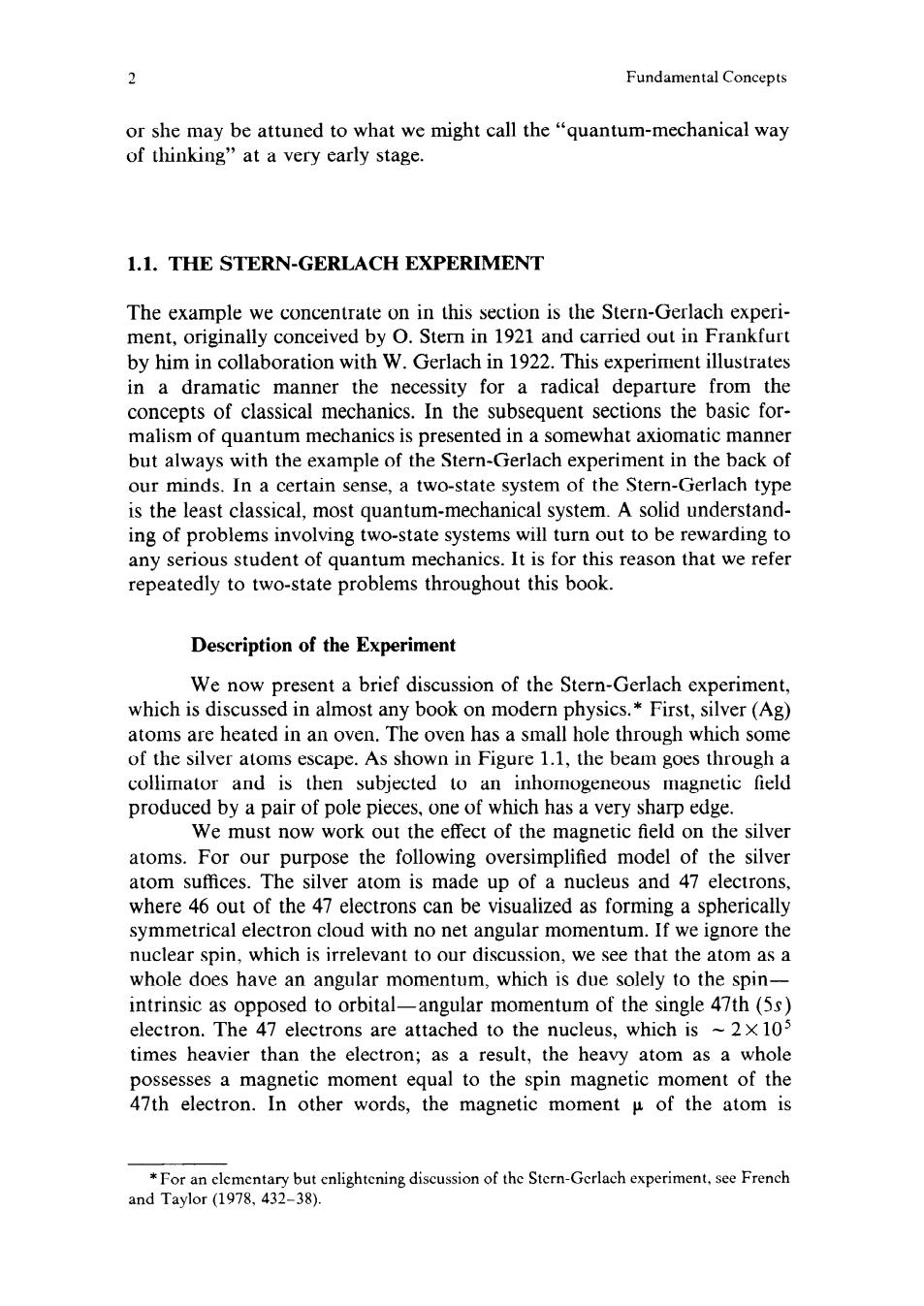正在加载图片...

2 Fundamental Concepts or she may be attuned to what we might call the"quantum-mcchanical way of thinking"at a very early stage. 1.1.THE STERN-GERLACH EXPERIMENT The example we concentrate on in this section is the Stern-Gerlach experi- ment,originally conceived by O.Stern in 1921 and carried out in Frankfurt by him in collaboration with W.Gerlach in 1922.This experiment illustrate in a dramatic manner the necessity for a radical departure from the concepts of classical mechanics.In the subsequent sections the basic for- malism of quantum mechanics is presented in a somewhat axiomatic manner but alway vith the example of the Stern-Gerlach experiment in the back of our minds.In a certain sense,a two-state system of the Stern-Gerlach type is the least classical,most quantum-mechanical system.A solid understand- ing of problems involving two-state systems will turn out to be rewarding to any serious student of qua m mecha nics.It is for this reason that we refer repeatedly to two-state problems throughout this book Description of the Experiment We now present a brief discussion of the Stern-Gerlach experiment which is discussed in almost any book on modern physics.*First,silver(Ag) atoms are heated in an oven.The oven has a small hole through which some of the silver As sho re 1.1,the beam goes through a collimato and is then subjected to an nhomogeneous magnetic field produced by a pair of pole pieces.one of which has a very sharp edge. We must now work out the effect of the magnetic field on the silver atoms.For our purpose the following oversimplified model of the silver atom suffices.The atom is made e up of nucleus and 47 electron where 46 out of the 47 electrons can be visualized as forming a spherically symmetrical electron cloud with no net angular momentum.If we ignore the nuclear spin,which is irrelevant to our discussion,we see that the atom as a whole does have an angular momentum,which is due solely to the spin- intrinsic as opposed to orbital-angular momentum of the single 47th(5s electron.The 47 electrons are attached to the nucleus,which is ~2x 10 times heavier than the electron:as a result.the heavy atom as a whole possesses a magnetic moment equal to the spin magnetic moment of the 47h electron.In other words,the magnetic moment of the atom is *For an elen and Taylor (1978,432-38). y but enlightening discussion of the Stern-Gerlach experiment.see French